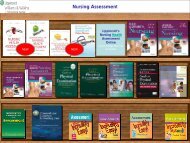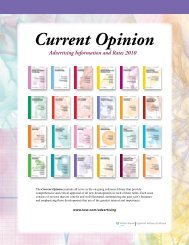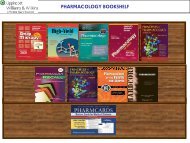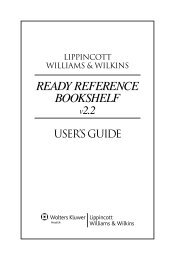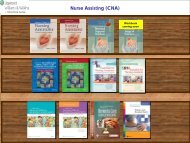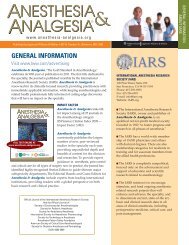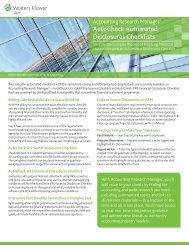TOP AUDITING ISSUES FOR 2013 - CCH
TOP AUDITING ISSUES FOR 2013 - CCH
TOP AUDITING ISSUES FOR 2013 - CCH
You also want an ePaper? Increase the reach of your titles
YUMPU automatically turns print PDFs into web optimized ePapers that Google loves.
70<br />
<strong>TOP</strong> <strong>AUDITING</strong> <strong>ISSUES</strong> <strong>FOR</strong> <strong>2013</strong> CPE COURSE<br />
RISK ASSESSMENT<br />
The risk assessment standards have existed for some time. However, there<br />
are still implementation issues in more than a small percentage of audit<br />
practices. These are significant problems because risk assessment has farreaching<br />
effects on the design of further audit procedures, and thus on the<br />
performance of many other areas of the audit.<br />
Correlation of Risk Assessment to the Design of Further Audit Procedures<br />
One of the core premises of the whole suite of risk assessment standards is<br />
that auditors should concentrate their audit resources on the areas where<br />
the risk of material misstatement is the highest. These standards are meant<br />
to be applied on three levels:<br />
The financial statements as a whole<br />
Account balances and transactions<br />
Relevant assertions<br />
Most auditors do well in assessing risks at the financial statement and account<br />
balance/transaction class levels. But they sometimes do not assess risks at<br />
the “relevant assertion” level, or may do so intuitively but not document the<br />
assessment. This often stems from a poor understanding of the standards,<br />
and the relationship that they intend to make between the assessed risk of<br />
material misstatement and the design of further audit procedures.<br />
One of the consequences of this poor understanding is that further audit<br />
procedures may not respond efficiently, or even adequately, to assessed risks<br />
of misstatement. This can happen when third-party practice aids are used<br />
in a mechanical fashion. For example:<br />
Risk assessment practice aids are filled out, but their results are not<br />
considered in applying further audit procedures.<br />
Third-party audit programs are completed in a mechanical fashion<br />
without correlating the nature and scope of further audit procedures to<br />
the risk assessment.<br />
Third-party audit programs are not appropriately tailored to the<br />
engagement’s needs, and thus unnecessary work is performed.<br />
The Public Company Accounting Oversight Board (PCAOB) has often cited<br />
auditors of SEC-issuers for poorly correlating the nature and extent of their<br />
audit procedures with their risk assessment. This led them to over-audit areas<br />
of low risk, and under-audit higher risk areas.



